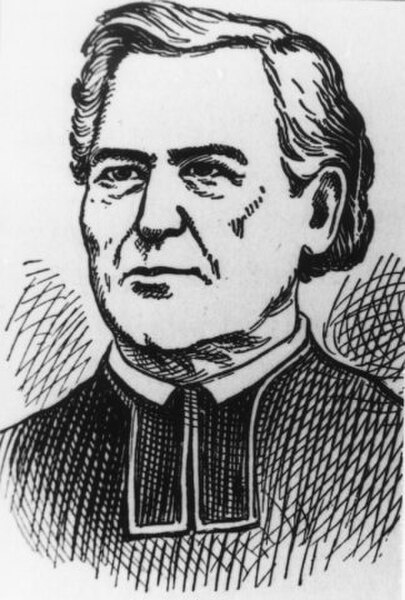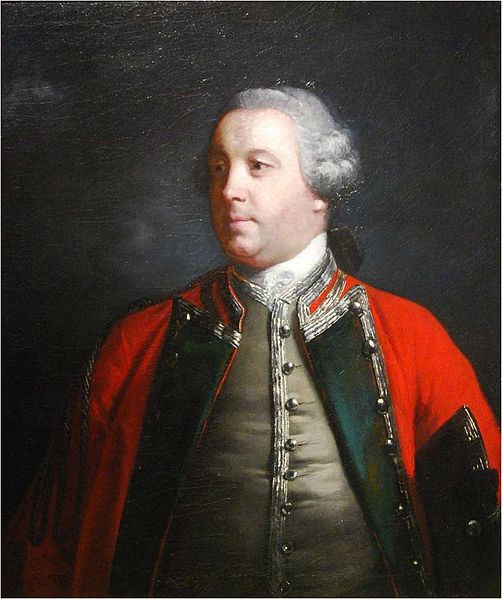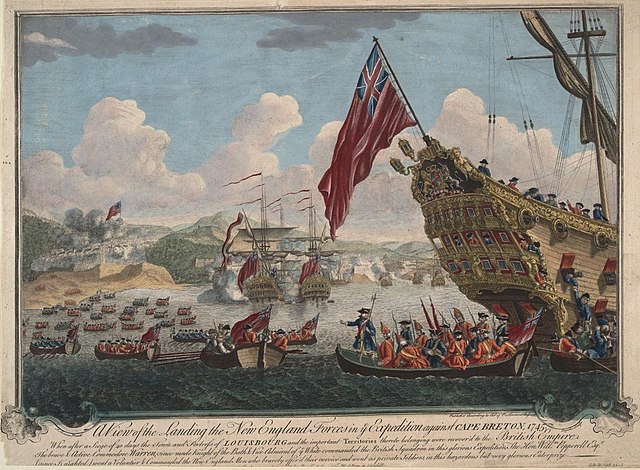Father Le Loutre's War (1749–1755), also known as the Indian War, the Mi'kmaq War and the Anglo-Mi'kmaq War, took place between King George's War and the French and Indian War in Acadia and Nova Scotia.c On one side of the conflict, the British and New England colonists were led by British officer Charles Lawrence and New England Ranger John Gorham. On the other side, Father Jean-Louis Le Loutre led the Mi'kmaq and the Acadia militia in guerrilla warfare against settlers and British forces. At the outbreak of the war there were an estimated 2500 Mi'kmaq and 12,000 Acadians in the region.
Lieutenant-General Peregrine Lascelles, Commander 47th Regiment
Richard Bulkeley
Father Jean-Louis Le Loutre led the Acadian Exodus, an event that saw half of the Acadian population in the Acadian peninsula relocate to French-controlled territories further inland.
Edward Cornwallis, the Governor of Nova Scotia
King George's War (1744–1748) is the name given to the military operations in North America that formed part of the War of the Austrian Succession (1740–1748). It was the third of the four French and Indian Wars. It took place primarily in the British provinces of New York, Massachusetts Bay, New Hampshire, and Nova Scotia. Its most significant action was an expedition organized by Massachusetts Governor William Shirley that besieged and ultimately captured the French fortress of Louisbourg, on Cape Breton Island in Nova Scotia, in 1745. In French, it is known as the Troisième Guerre Intercoloniale or Third Intercolonial War.
Colored engraving depicting the Siege of Louisbourg Following a 47-day siege, British forces captured the Fortress of Louisbourg in July 1745.





